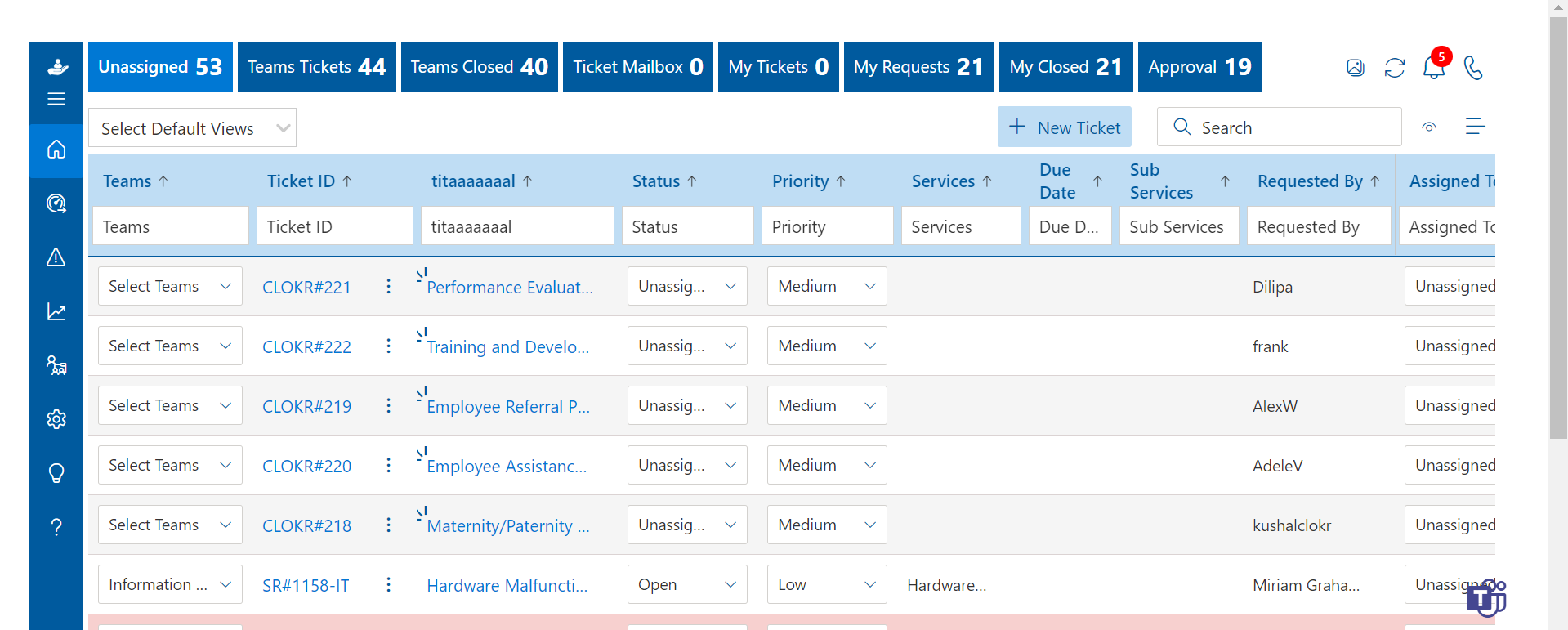Maintenance Ticketing System
A Maintenance Ticketing System is a comprehensive solution for managing maintenance requests, tracking progress, and ensuring timely resolution of maintenance issues.
Maintenance Ticketing System
A maintenance ticketing system is a software tool used by organizations to manage and track maintenance requests. It allows users to submit tickets for maintenance tasks, such as repairs or equipment servicing. Explore the ultimate guide on the maintenance ticketing system which helps in maintenance workflows, ensuring timely resolution of issues and efficient allocation of resources.
Overview of Maintenance Ticketing System
A Maintenance Ticketing System is a vital component of modern organizations, facilitating the efficient management and resolution of maintenance-related tasks and issues.
It serves as a centralized platform where users can submit maintenance requests, report equipment malfunctions, or highlight facility issues.
This system streamlines the entire process, from ticket creation to resolution, ensuring that maintenance tasks are addressed promptly and effectively. At its core, a maintenance ticketing system functions as a digital hub, allowing users to submit tickets detailing maintenance needs.
These tickets typically include information such as the nature of the issue, its location, and any relevant details. Once submitted, tickets are routed to designated personnel or teams responsible for addressing them.
Importance of Maintenance Ticketing Systems in Organizational Efficiency:
Maintenance ticketing systems play a pivotal role in enhancing organizational efficiency by streamlining maintenance processes, improving communication, and optimizing resource allocation.
Below are several key aspects highlighting the importance of helpdesk ticketing systems in organizational efficiency:
- Streamlining Maintenance Workflows: Helpdesk ticketing systems provide a structured framework for submitting, tracking, and managing maintenance requests. By centralizing all maintenance-related tasks in one platform, these systems eliminate the need for manual tracking methods, such as spreadsheets or emails. This streamlines the workflow, reduces administrative overhead, and ensures that maintenance tasks are promptly addressed.
- Prioritizing Tasks: Helpdesk ticketing systems allow organizations to prioritize maintenance tasks based on urgency, severity, or impact on operations. By categorizing and assigning priority levels to incoming requests, these systems ensure that critical issues are addressed first, minimizing downtime and operational disruptions. This prioritization helps organizations allocate resources effectively and focus on tasks that have the greatest impact on business operations.
- Improving Communication and Collaboration: SharePoint ticketing system facilitate communication and collaboration among stakeholders involved in the maintenance process. Users can submit maintenance requests, provide detailed information about the issue, and communicate with maintenance personnel directly through the system. Additionally, these systems often include features such as notifications and updates, keeping stakeholders informed about the status of their requests and any relevant developments. Improved communication leads to faster resolution of issues and enhances overall productivity.
- Enhancing Accountability and Transparency: SharePoint ticketing systems promote accountability by assigning tasks to specific individuals or teams responsible for resolution. By tracking the progress of each ticket and recording actions taken, these systems ensure that maintenance tasks are completed promptly and that responsible parties are held accountable for their work. Furthermore, maintenance ticketing systems provide transparency by allowing users to track the status of their requests and access historical data on past maintenance activities. This transparency fosters trust among stakeholders and promotes a culture of accountability within the organization.
- Analyzing Performance and Identifying Areas for Improvement: Microsoft teams ticketing systems often include reporting and analytics features that enable organizations to analyze performance metrics, identify trends, and pinpoint areas for improvement. By gathering data on maintenance activities, response times, and resolution rates, these systems help organizations identify inefficiencies, streamline processes, and make data-driven decisions to optimize resource allocation and enhance operational efficiency.
By leveraging the capabilities of these systems, organizations can achieve higher levels of productivity, minimize downtime, and ensure the smooth operation of their facilities and equipment.
Key Components of Microsoft Teams Ticketing Systems:
Microsoft teams ticketing systems are designed to streamline the process of reporting, tracking, and resolving maintenance issues within an organization. To effectively manage maintenance tasks, these systems typically include several key components:
Ticket Submission Interface:
The ticket submission interface allows users to report maintenance issues or request services. It allows users to provide detailed information about the problem, including the nature of the issue, its location, and any relevant attachments or documentation. The submission interface should be user-friendly and accessible to all stakeholders, including employees, customers, and facilities personnel.
Ticket Management Dashboard:
The ticket management dashboard serves as the central hub for administrators and maintenance personnel to view, prioritize, and manage incoming tickets. It provides an overview of all active tickets, including their status, priority level, assigned technician, and deadline for resolution. The dashboard may include filters, search functionality, and sorting options to help users quickly locate and prioritize tickets based on various criteria.
Ticket Assignment and Routing:
This component automates the process of assigning incoming tickets to the appropriate personnel or teams for resolution. Tickets may be routed based on predefined rules, such as the type of issue, location, or technician availability. Automated ticket assignment helps ensure that tasks are distributed evenly among team members and that critical issues are promptly addressed.
Communication Tools:
Maintenance ticketing systems often include built-in communication tools to facilitate collaboration and information sharing among stakeholders. These tools may include messaging features, email notifications, and comment threads within individual tickets. By providing a centralized platform for communication, Microsoft Teams ticketing system help improve transparency, reduce response times, and ensure that all relevant parties are kept informed throughout the resolution process.
Work Order Management:
Work order management functionality allows administrators to create and track detailed work orders for scheduled maintenance tasks or planned repairs. Work orders typically include information such as the scope of work, required materials or resources, estimated time for completion, and associated costs. Work order management helps organizations plan and schedule maintenance activities more effectively, allocate resources efficiently, and track expenses accurately.
Reporting and Analytics Tools:
Reporting and analytics tools enable organizations to generate custom reports and analyze key performance metrics related to maintenance activities. These tools may include predefined reports on ticket volume, resolution times, technician productivity, and maintenance costs, as well as customizable dashboards for real-time monitoring. By providing insights into maintenance performance and trends, reporting and analytics tools help organizations identify areas for improvement, optimize resource allocation, and make data-driven decisions.
Integration Capabilities:
SharePoint ticketing systems often offer integration capabilities to seamlessly connect with other software applications and systems used within the organization. Common integrations include enterprise asset management (EAM) systems, facility management software, inventory management systems, and customer relationship management (CRM) platforms. Integration allows for the exchange of data between systems, streamlines workflows, and eliminates manual data entry tasks.
The key components of Microsoft Teams ticketing systems include ticket submission interfaces, ticket management dashboards, ticket assignment and routing functionality, communication tools, work order management features, reporting and analytics tools, and integration capabilities. These components help organizations streamline maintenance processes, improve communication and collaboration, and optimize resource allocation for more efficient maintenance operations.
Benefits of Implementing a SharePoint Ticketing System:
Implementing a SharePoint ticketing system offers numerous advantages for organizations across various industries. These benefits contribute to improved operational efficiency, enhanced productivity, and better management of maintenance tasks.
Here are some key benefits of implementing a maintenance ticketing system:
- Streamlined Maintenance Processes: A SharePoint ticketing system provides a centralized platform for submitting, tracking, and managing maintenance requests. By automating workflows and standardizing processes, organizations can streamline their maintenance operations, reduce manual intervention, and ensure consistent handling of maintenance tasks.
- Improved Response Times: With a maintenance ticketing system in place, maintenance requests are systematically logged, prioritized, and assigned to the appropriate personnel or teams. This efficient allocation of resources ensures that critical issues receive prompt attention, leading to faster response times and quicker resolution of maintenance issues.
- Enhanced Communication and Collaboration: SharePoint ticketing systems facilitate communication and collaboration among stakeholders involved in the maintenance process. Users can submit requests, provide updates, and communicate with maintenance personnel directly through the system. This improved communication fosters transparency, reduces misunderstandings, and promotes collaboration among teams.
- Better Resource Allocation: By providing visibility into all active maintenance requests and their status, maintenance ticketing systems enable organizations to optimize resource allocation. Managers can identify areas of high demand, allocate resources accordingly, and ensure that maintenance tasks are evenly distributed among available personnel. This balanced allocation of resources helps maximize efficiency and minimize bottlenecks.
- Increased Accountability: Maintenance ticketing systems track the entire lifecycle of maintenance requests, from submission to resolution. This transparency holds maintenance personnel accountable for their actions and ensures that tasks are completed within established timelines. Additionally, the system records all interactions and updates related to each ticket, providing a detailed audit trail for accountability purposes.
- Data-driven decision-making: Helpdesk ticketing system capture valuable data on maintenance activities, including ticket volume, response times, resolution rates, and recurring issues. Organizations can use this data to identify trends, analyze performance metrics, and make informed decisions to improve maintenance processes. By leveraging data insights, organizations can proactively address maintenance challenges and optimize their operations.
- Enhanced Customer Satisfaction: By providing a streamlined process for submitting and tracking maintenance requests, maintenance ticketing systems improve customer satisfaction. Users can easily report issues, track the progress of their requests, and receive timely updates on resolution efforts. This transparency and responsiveness demonstrate the organization’s commitment to addressing customer needs promptly and effectively.
- Regulatory Compliance: Maintenance ticketing systems help organizations comply with regulatory requirements and industry standards related to maintenance management. By maintaining accurate records of maintenance activities and ensuring timely resolution of maintenance issues, organizations can demonstrate compliance with regulatory mandates and avoid potential penalties or fines.
Implementing a maintenance ticketing system offers numerous benefits, including streamlined maintenance processes, improved response times, enhanced communication and collaboration, better resource allocation, increased accountability, data-driven decision-making, enhanced customer satisfaction, and regulatory compliance.
What are the different types of ticketing systems?
There are various types of ticketing systems used in different contexts and industries. Here are some of the most common ones:
- IT Ticketing Systems: IT ticketing systems are used by IT departments to manage and resolve technical issues reported by users or stakeholders. These systems handle tasks such as software glitches, hardware malfunctions, network issues, password resets, and other IT-related inquiries.
- Customer Support Ticketing Systems: Customer support ticketing systems are used by businesses to manage customer inquiries, complaints, and service requests. These systems facilitate communication between customers and support agents, track the status of tickets, prioritize issues, and ensure timely resolution of customer issues.
- Help Desk Ticketing Systems: Help desk ticketing systems are used by organizations to provide internal support services to employees or stakeholders. These systems handle requests related to HR inquiries, facilities management, procurement, IT support, and other internal service requests.
- Simple Ticketing Systems: Simple ticketing systems are lightweight solutions used for managing basic requests or tasks within organizations. These systems are often used for tasks such as room reservations, equipment bookings, event registrations, or basic IT support tickets.
- Maintenance Ticketing Systems: Maintenance ticketing systems focus specifically on managing maintenance-related tasks and issues within organizations. These systems handle tasks such as equipment repairs, preventive maintenance activities, facility inspections, and maintenance scheduling.
- Internal ticketing systems: An internal ticketing system falls under the category of ticketing systems. It is a specific type of ticketing system designed to manage internal requests, inquiries, and tasks within an organization. While many ticketing systems focus on external customer support or service delivery, an internal ticketing system is used to handle various internal requests and issues among employees, departments, or stakeholders within the organization.
Each type of ticketing system is designed to address specific needs and workflows within different industries and organizational contexts. Depending on the requirements of the organization, one or more of these ticketing systems may be implemented to streamline operations, improve service delivery, and enhance customer satisfaction.
Tips for Selecting the Right Maintenance Ticketing System for Your Organization:
Selecting the right maintenance ticketing system is crucial for optimizing maintenance operations, improving efficiency, and ensuring timely resolution of maintenance issues.
Here are some tips to help you choose the best-fit solution for your organization:
- Define Your Requirements: Start by clearly defining your organization’s requirements and objectives for a maintenance ticketing system. Identify the specific features, functionalities, and capabilities that are essential for addressing your maintenance needs. Consider factors such as the types of maintenance tasks you need to manage, the volume of requests, user roles and permissions, integration requirements, and budget constraints.
- Evaluate User-Friendliness: Choose a maintenance ticketing system that is intuitive and user-friendly for both requesters and maintenance personnel. The system should have a straightforward interface for submitting tickets, tracking progress, and accessing relevant information. Conduct usability testing or request demos to evaluate the user experience and ensure that the system meets the needs of all stakeholders.
- Assess Customization Options: Look for a maintenance ticketing system that offers flexibility and customization options to tailor the solution to your organization’s unique requirements. Assess the system’s ability to customize ticket forms, workflows, notification settings, reports, and dashboards according to your preferences. Customization capabilities ensure that the system aligns with your specific workflows and processes.
- Consider Integration Capabilities: Evaluate the integration capabilities of the maintenance ticketing system with other software applications and systems used within your organization. Ensure that the system can seamlessly integrate with existing tools such as enterprise asset management (EAM) systems, facility management software, inventory management systems, and communication platforms. Integration streamlines data exchange, eliminates silos, and enhances workflow efficiency.
- Review Scalability and Performance: Choose a helpdesk ticketing system that can scale with your organization’s growth and accommodate increasing volumes of maintenance requests over time. Assess the system’s performance, reliability, and scalability to ensure that it can handle peak loads and support multiple users simultaneously without compromising speed or functionality. Consider cloud-based solutions for scalability and flexibility advantages.
- Evaluate Mobile Accessibility: In today’s mobile-centric environment, ensure that the maintenance ticketing system offers robust mobile accessibility features. Look for solutions with responsive web design or native mobile apps that enable users to submit, track, and manage maintenance requests on-the-go from smartphones or tablets. Mobile accessibility improves technician productivity, facilitates real-time communication, and enables faster response times to maintenance issues.
- Check Support and Training Options: Consider the level of support and training provided by the helpdesk ticketing system vendor. Evaluate the availability of technical support, training resources, user documentation, and online tutorials to help users get up to speed with the system quickly. Choose a vendor with a reputation for excellent customer support and ongoing product development to ensure a positive user experience.
- Review Pricing and Licensing Models: Evaluate the pricing and licensing models of the maintenance ticketing system to ensure that they align with your budget and licensing requirements. Consider factors such as subscription fees, user-based pricing, add-on costs for additional features, and any hidden charges. Compare pricing plans from multiple vendors and choose the option that offers the best value for your organization’s needs.
- Seek References and Recommendations: Before making a final decision, seek references and recommendations from other organizations or industry peers who have experience using the helpdesk ticketing system. Ask for case studies, testimonials, or customer references from the vendor to validate their track record and ensure customer satisfaction. Hearing from existing users can provide valuable insights into the system’s performance, reliability, and usability.
- Plan for Future Growth and Evolution: Finally, choose a maintenance ticketing system that can adapt and evolve alongside your organization’s changing needs and industry trends. Consider the vendor’s roadmap for future product enhancements, updates, and innovations to ensure that the system remains relevant and continues to meet your requirements in the long term. Selecting a future-proof solution minimizes the need for costly migrations or system replacements down the line.
By following these tips and carefully evaluating your options, you can select the right maintenance ticketing system that aligns with your organization’s goals, enhances operational efficiency, and delivers maximum value to your maintenance teams and stakeholders.
Conclusion
In conclusion, a maintenance ticketing system serves as the backbone of efficient and effective maintenance operations, streamlining the process of reporting, prioritizing, assigning, and tracking maintenance tasks. By centralizing communication and documentation, it promotes transparency, accountability, and collaboration among maintenance teams, facility managers, and requesters. A complete solution called Helpdesk 365 is made to make helpdesk operations in businesses more efficient and effective. Helpdesk 365 is a cloud-based platform that provides a number of features and functionality for effectively managing IT support tickets, internal service requests, and client queries.
Frequently Asked Questions
By implementing a maintenance ticketing system, an organization can streamline its maintenance procedures in several ways:
Centralized Management: The system provides a centralized platform for submitting, tracking, and managing maintenance requests, ensuring all requests are efficiently recorded and addressed.
Prioritization: Maintenance tickets can be prioritized based on urgency and importance, ensuring critical issues are addressed promptly, minimizing downtime, and preventing potential disruptions to operations.
Assignment and Accountability: Tickets are assigned to appropriate personnel or teams, promoting accountability, and ensuring tasks are completed within designated timeframes. This helps prevent tasks from falling through the cracks and ensures timely resolution.
Communication: The system facilitates communication between requesters, maintenance personnel, and other stakeholders, allowing for clear and transparent communication throughout the maintenance process. This reduces miscommunications and delays in resolving issues.
Data Analysis: Maintenance ticketing systems often include reporting and analytics tools that enable organizations to analyze maintenance trends, identify recurring issues, and make data-driven decisions to improve maintenance procedures and optimize resource allocation.
A maintenance ticketing system prioritizes maintenance tasks based on predefined criteria such as urgency, severity, impact on operations, and available resources. Critical issues are assigned higher priority levels, ensuring they are addressed promptly to minimize downtime and operational disruptions. Additionally, the system may consider factors such as service level agreements (SLAs), maintenance schedules, and historical data to prioritize tasks effectively.
Some emerging trends and innovations in maintenance ticketing systems include:
- Integration with IoT devices for predictive maintenance.
- Adoption of artificial intelligence (AI) for automated task assignment and predictive analytics.
- Implementation of augmented reality (AR) for remote assistance and troubleshooting.
- Mobile-first solutions to enable real-time access and communication for field technicians.
Schedule a free personalized 1:1 demo
By proceeding, you accept Cubic Logics’s terms and conditions and privacy policy






Start Your Free Experience
By proceeding, you accept Cubic Logics’s terms and conditions and privacy policy






Schedule a free personalized 1:1 demo
By proceeding, you accept Cubic Logics’s terms and conditions and privacy policy








Try It Free, No Obligation
By proceeding, you accept Cubic Logics’s terms and conditions and privacy policy








Request for the Custom Price
By proceeding, you accept Cubic Logics Terms and Conditions and Privacy Policy
Request of the Free License
By proceeding, you accept Cubic Logics Terms and Conditions and Privacy Policy
Offer is expiring soon!
Fill in your details below to receive your personalized coupon code.
Start Your Free Experience
By proceeding, you accept Cubic Logics’s terms and conditions and privacy policy











